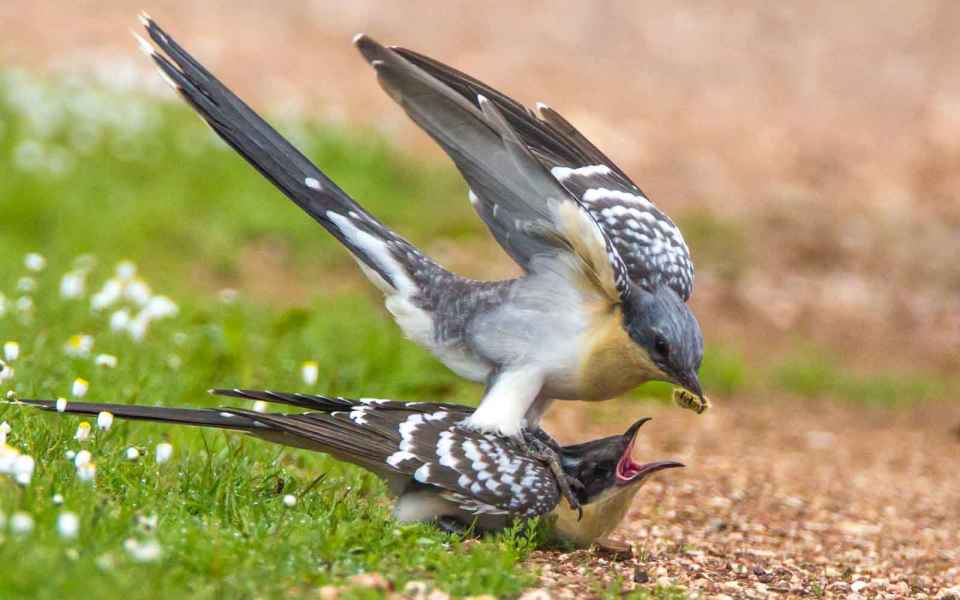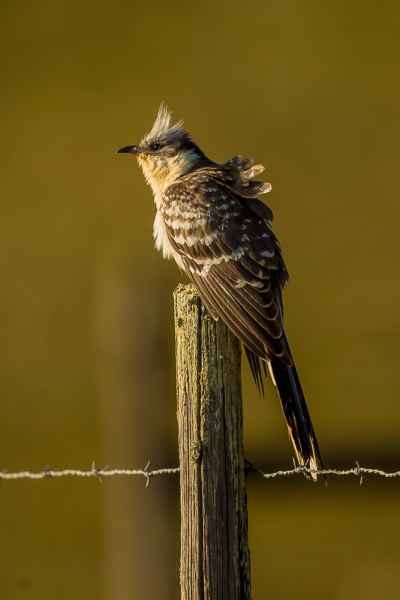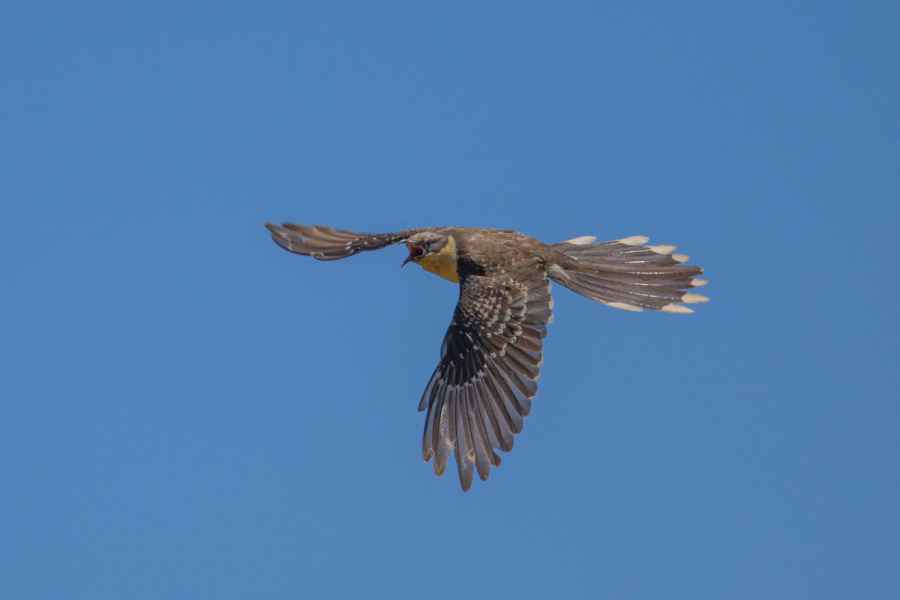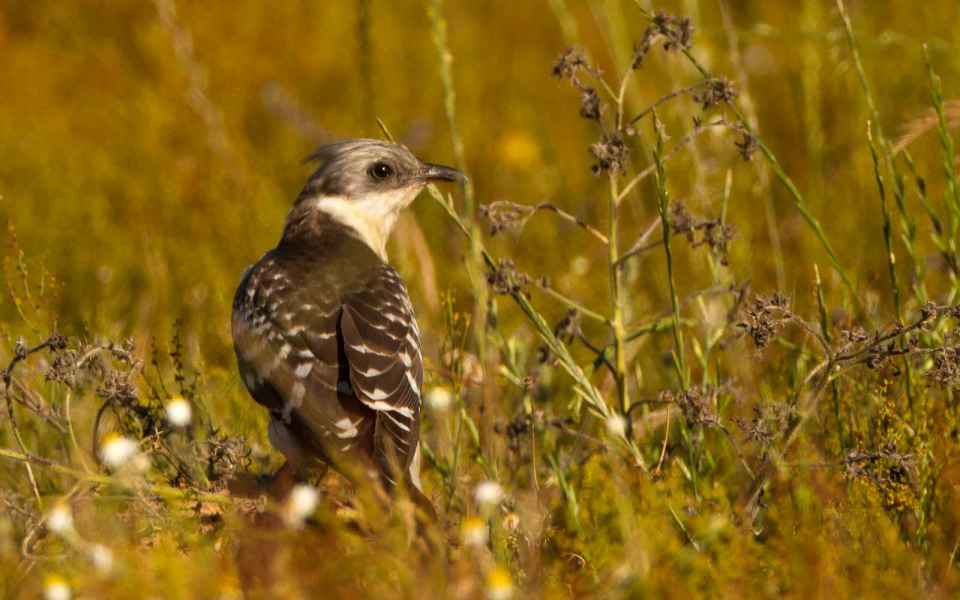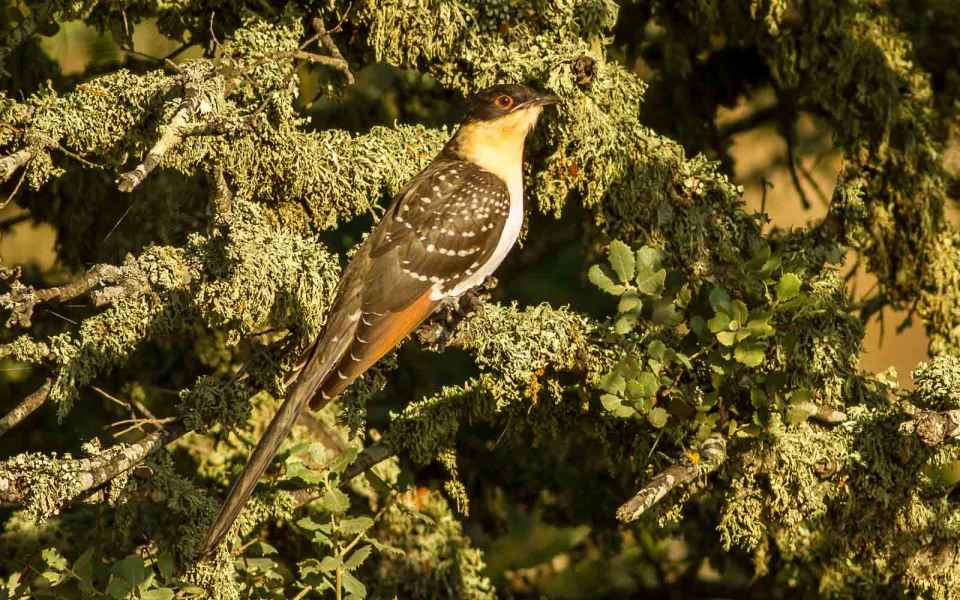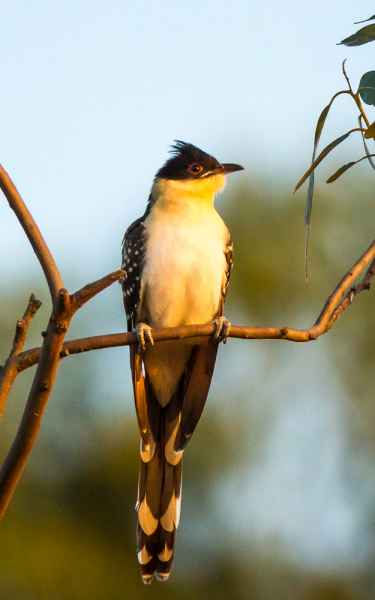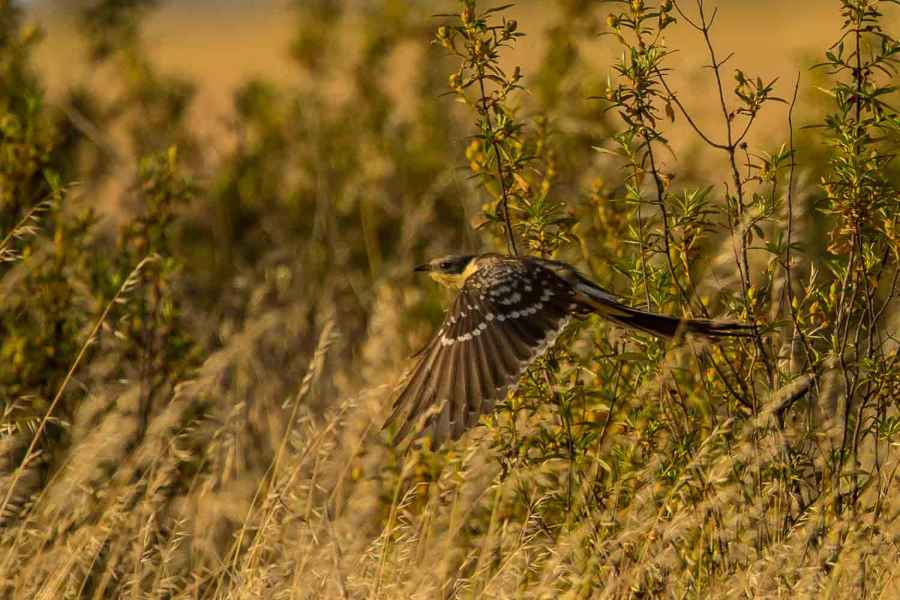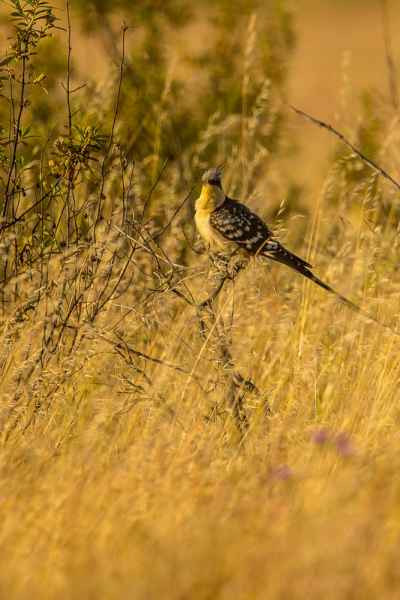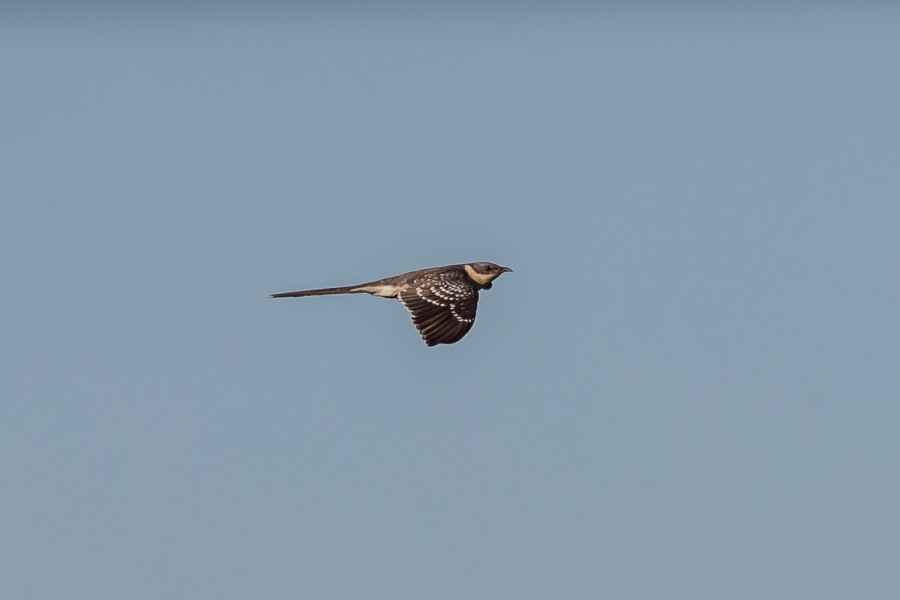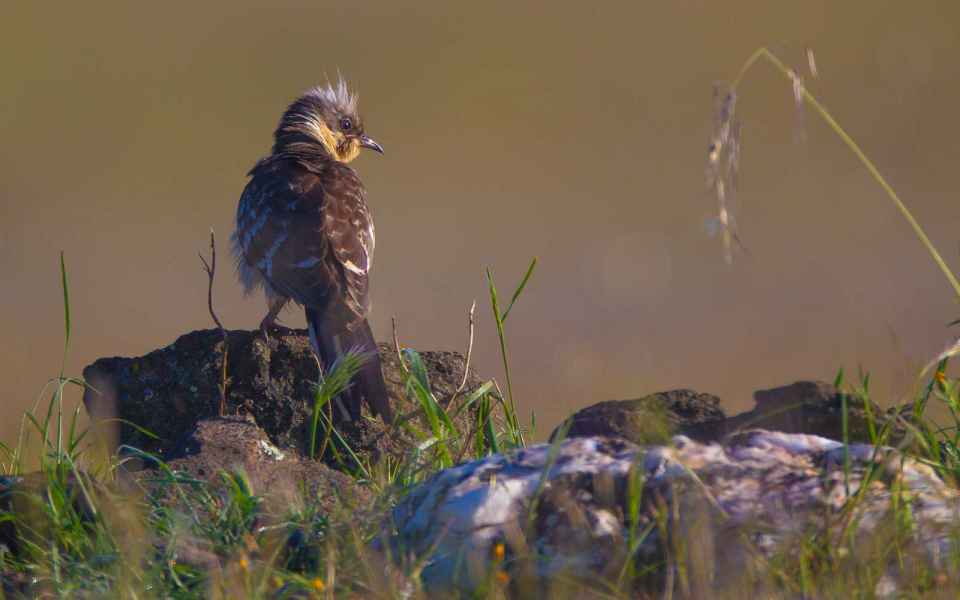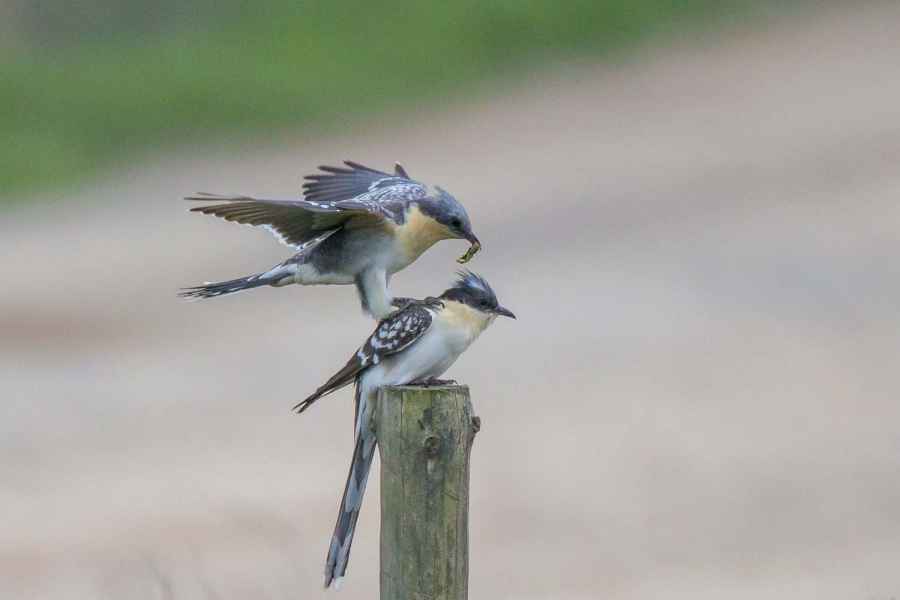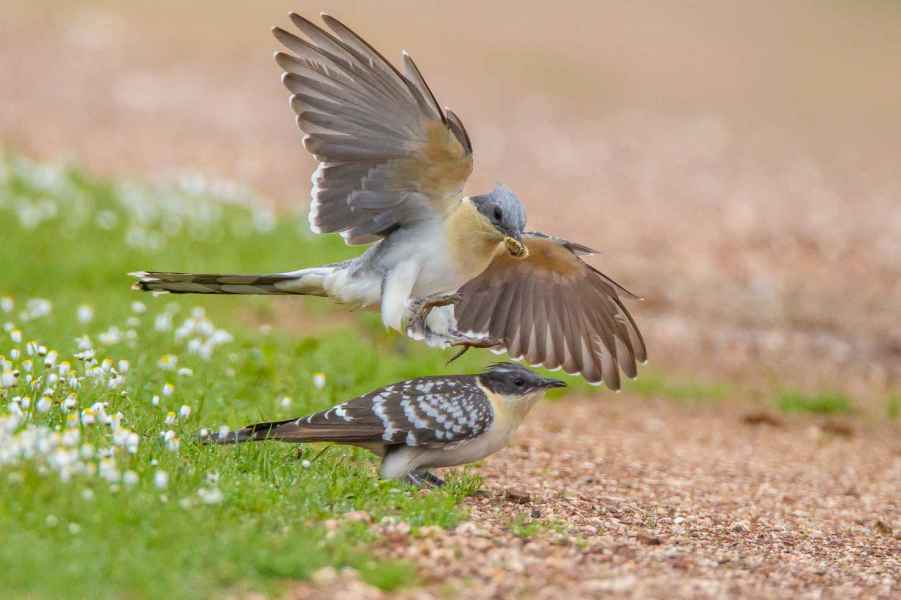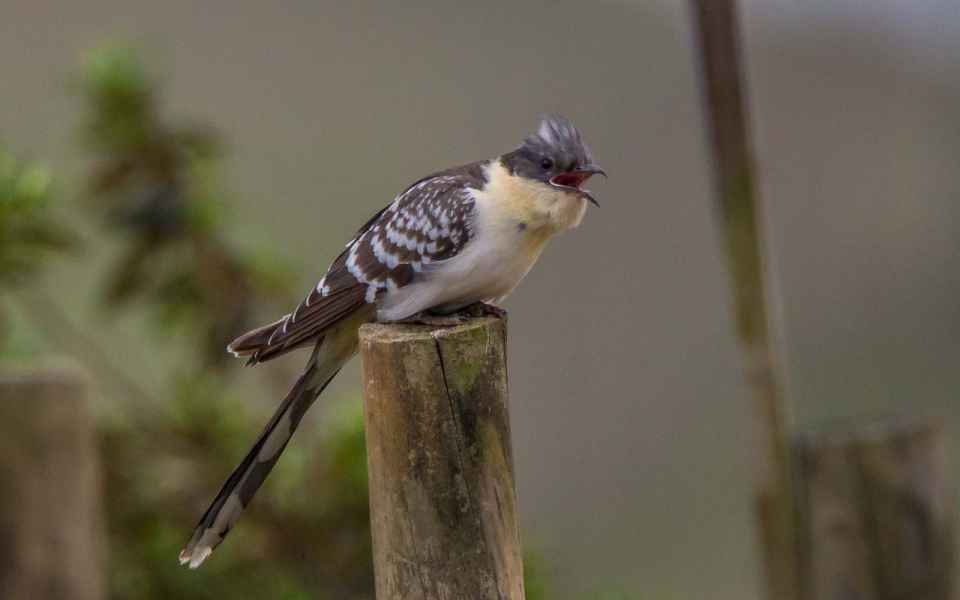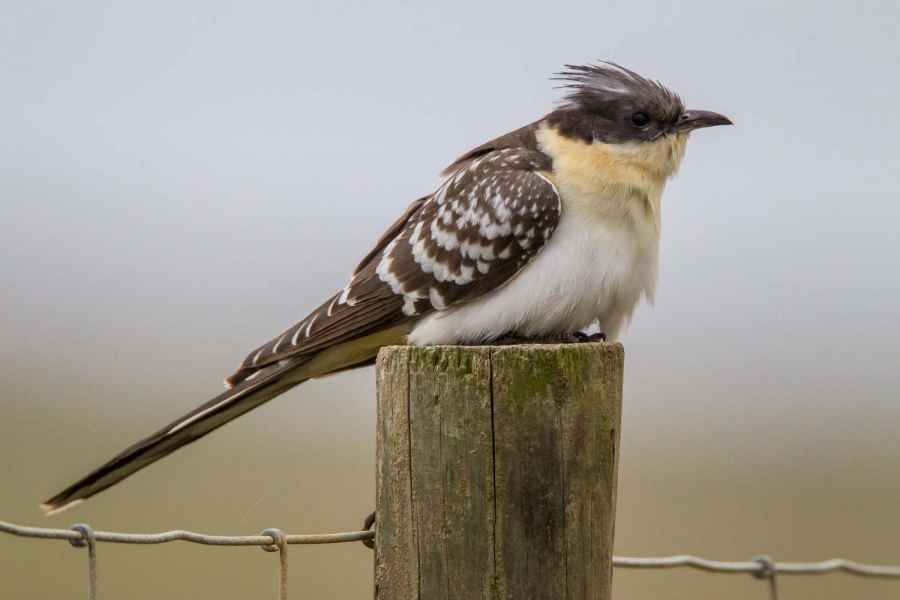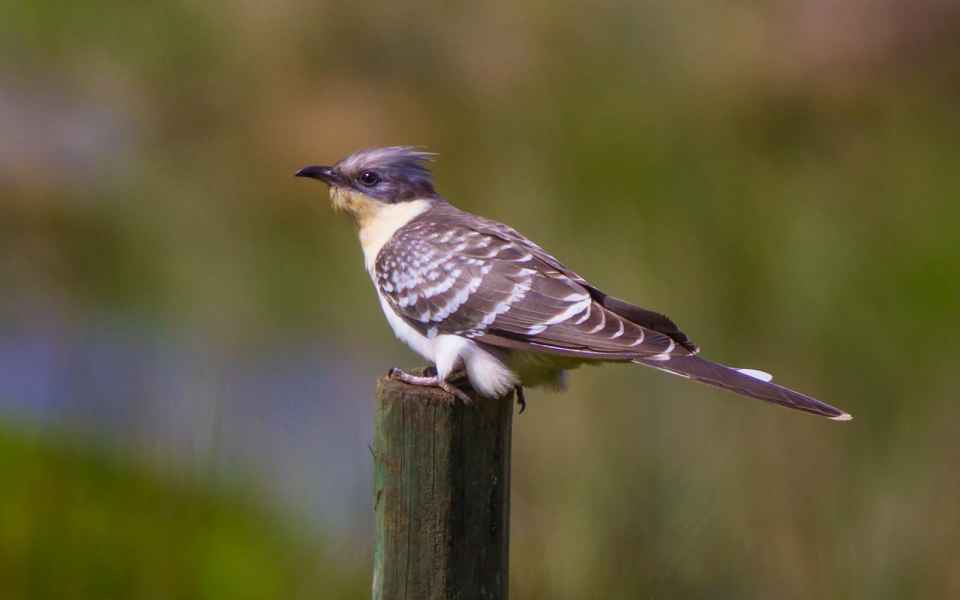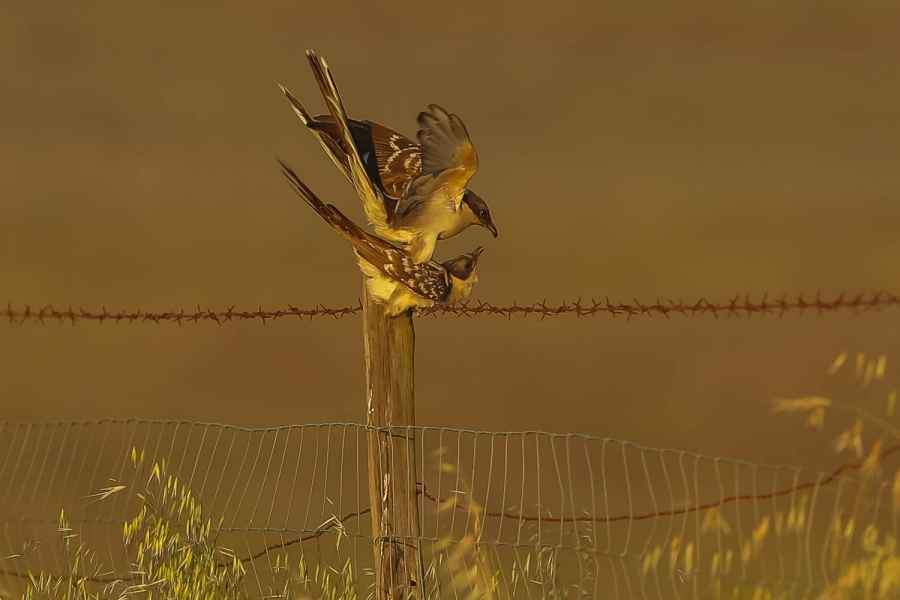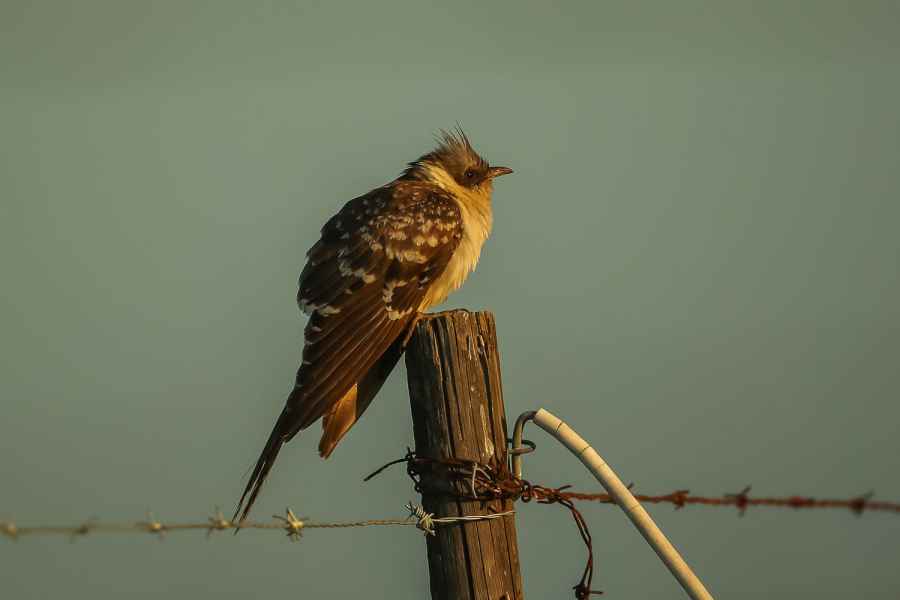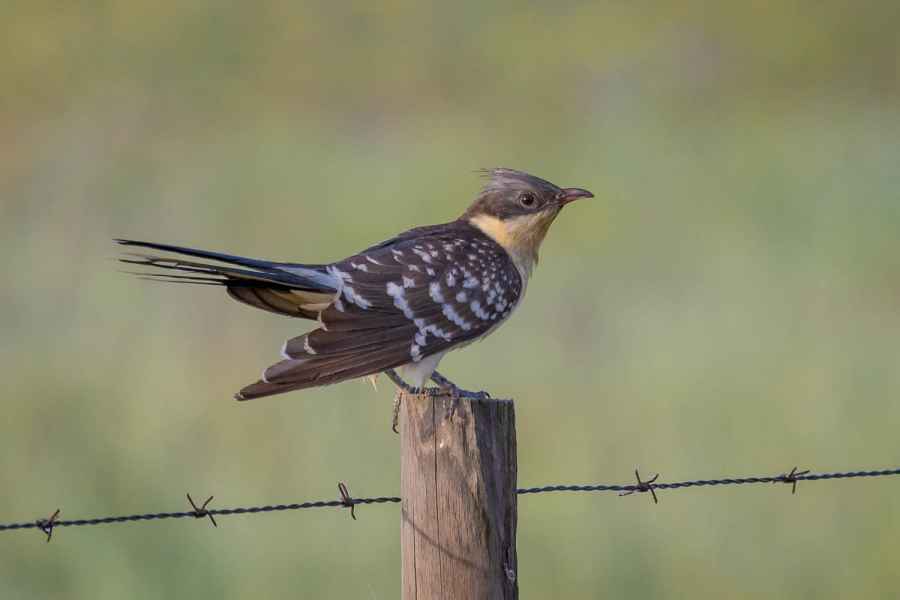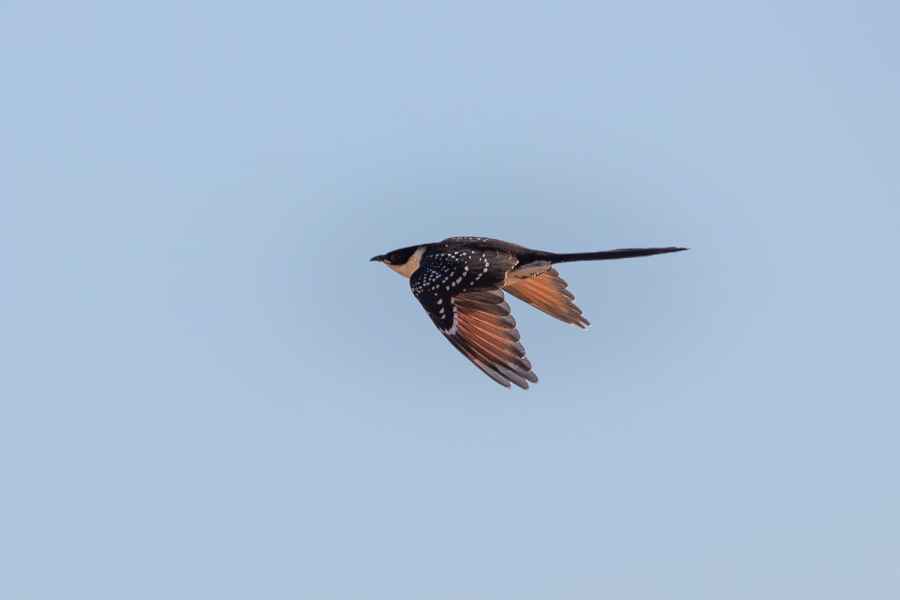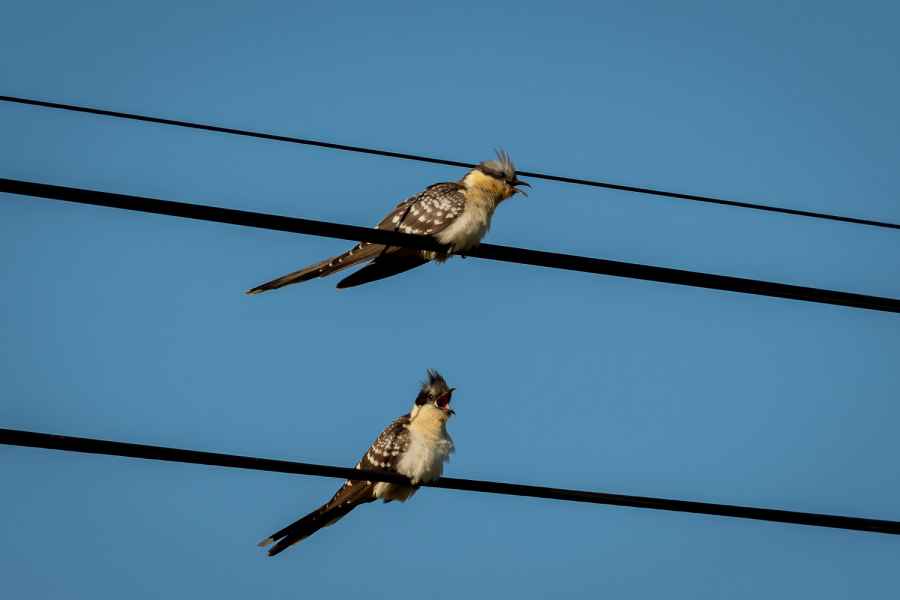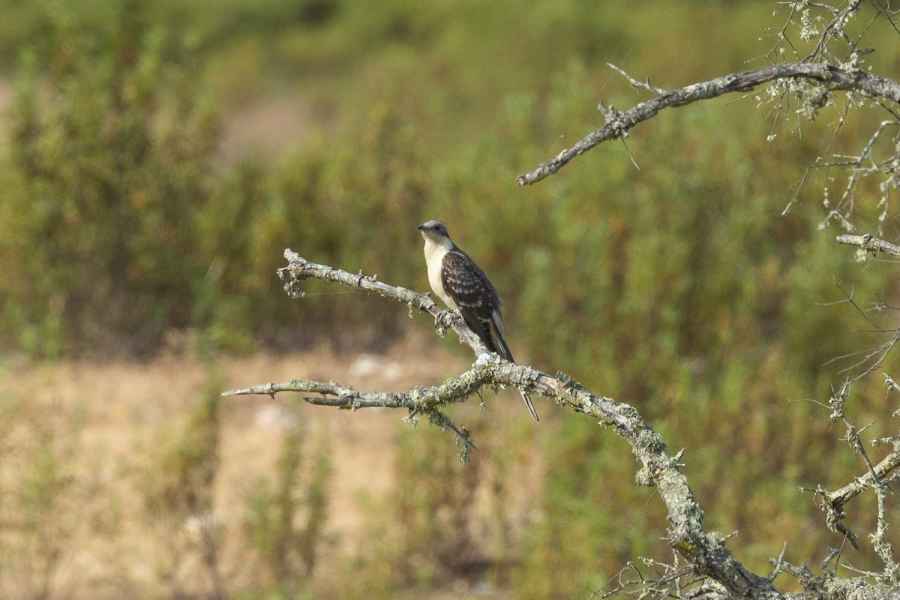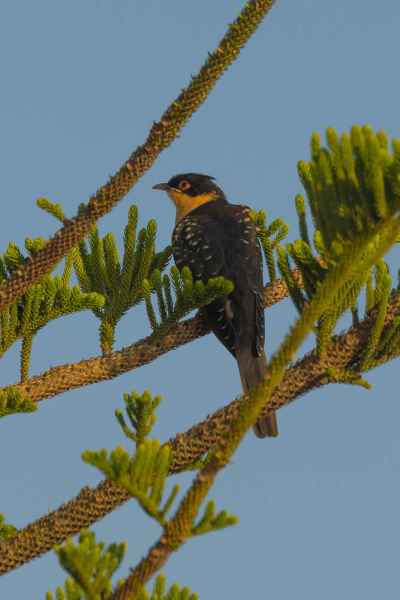A less common species than it's better known cousin, the Great Spotted normally parasitizes Corvids such as Magpies and Crows. It arrives in Portugal during January and leaves in June.
The best time to get a good sight of this enigmatic species is from mid February through to the end of April, when they are apparently indifferent to the close proximity of humans, but by May they become a great deal more cryptic and are difficult to find. Juveniles are around for a short period from the last week in May.
The adult Great Spotted Cuckoo has a grey mantle, grey upper wings flecked with white, a subtle yellow chin and neck, black nape, white belly, a light lilac crest and a long dark tail. Males have a slightly lighter cap than females.
Juveniles have a black cap and nape, dark mantle, white belly, subtle yellow chin and neck and dark grey wings flecked with white and very obvious orange-brown primaries with black tips.
Their flight pattern is as for Common Cuckoos, i.e. flat and straight, but the wing-beat more often comes above the horizontal. When copulating the male has to present a caterpillar to the female for the latter to accept him. She sits in the open and waits while he searches ... Whenever present they can be detected by their loud gutteral call.
They winter in Africa south of the Sahara reaching as far south as the Okavango Delta in Botswana.
Joomla Gallery makes it better. Balbooa.com

